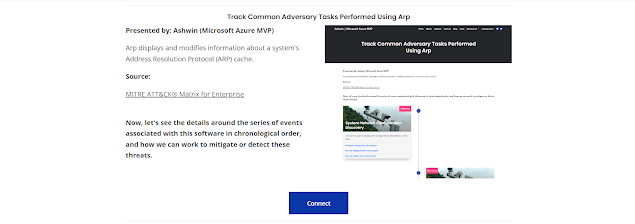Track Common Adversary Tasks Performed Using Arp
To know more about it, you can go through my detailed document by clicking here
Overview
Arp can easily show and modify the information related to a system's Address Resolution Protocol (ARP) cache. ARP is a system used for mapping a dynamic IP address into a permanent physical machine address in a Local Area Network (LAN) and usually works between the second and third layers of the Open Systems Interconnection (OSI) model.
How Does it Works?
Every time a host needs to transmit a packet to another host in the LAN, it always queries the ARP cache for the MAC address since it maintains a list of all the IP addresses and their corresponding MAC addresses. If it does, the request is processed further; if not, a request for network addresses is submitted, and an ARP operation is carried out.
Attacks on ARP
Attacks like ARP Spoofing, also known as ARP poison routing or ARP cache poisoning, are frequently successful against LANs that use ARP. By sending false ARP messages across the network, the attacker attempts to establish a connection with the authentic IP address of a server or computer that is already connected to the network. Once this connection is made, all the sensitive data that was intended for the authentic IP address can be sent to the hacker's computer, which can have a significant negative impact on any enterprise. However, these attacks may also give rise to additional harmful attacks, such as session hijacking, denial-of-service attacks, man-in-the-middle attacks, etc.
Prevention
The followings ways can help in securing your network from ARP attacks:
- Understand the spoofing process- This is the most basic idea before you try to resolve a full-scale spoofing attack. You can go for any kind of server's abnormal activity which will also provide clues about the vulnerable data for various attacks.
- Identify the spoofing attack- After understanding the spoofing process, you have to identify the type of attack as threat actors may try to access your device in various ways and determining the attack process will help you to decide the best course of action.
- Rely on Virtual Private Networks- This is the best way to prevent any kind of attack from happening in the first place.
- Use a static ARP- If you have two hosts that communicates regularly, then, creating a static ARP entry will not only offer a permanent entry in your ARP cache, but also add another layer of protection from spoofing.
- Get a detection tool- Even if you are well-equipped with all the knowledge and techniques of preventing an attack, it's not always possible to prevent one; hence, a third-party tool like XArp can help you to detect the spoofing attack easily.
To know more about it, you can go through my detailed document by clicking here




Comments
Post a Comment